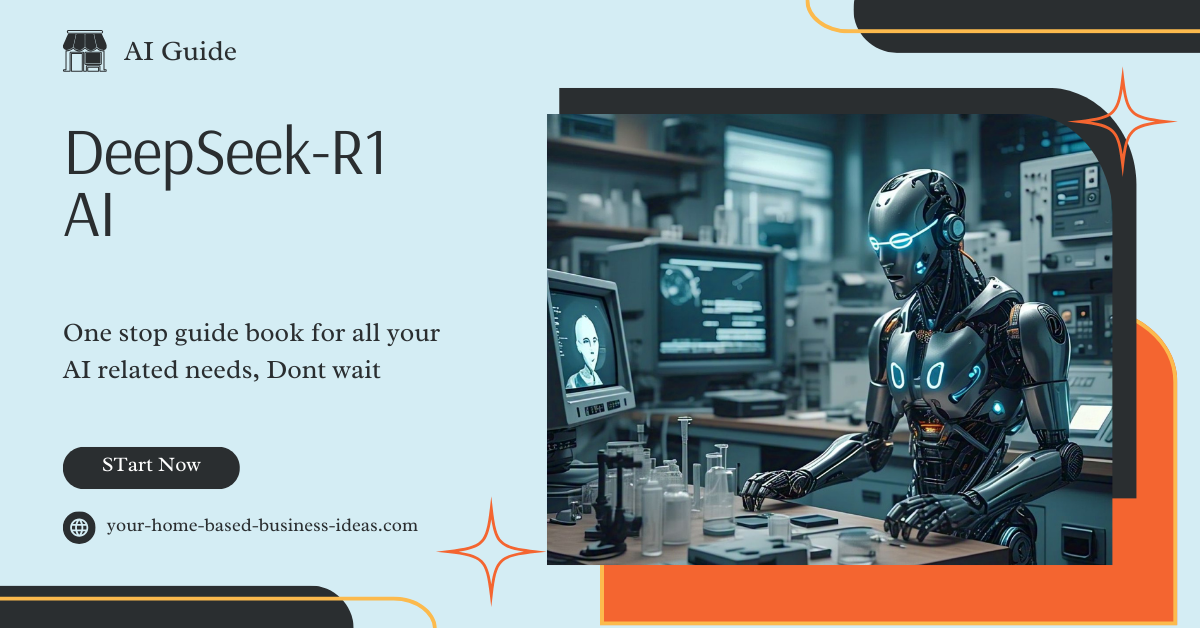DeepSeek-R1 AI and Its Impact on IT Jobs: A Comprehensive Analysis
Introduction
Artificial Intelligence (AI) continues to revolutionize industries globally, and the IT sector has been at the forefront of this transformation. The introduction of DeepSeek-R1, a cutting-edge AI model, marks another significant milestone in this journey. Designed to redefine how we approach complex problem-solving, automation, and decision-making, DeepSeek-R1 has implications that stretch across the IT landscape. While it promises to enhance productivity and efficiency, it also raises questions about the future of IT jobs and the skills required to remain relevant in the workforce.
This blog will explore the impact of DeepSeek-R1 on IT jobs, delving into various dimensions such as automation, workforce evolution, ethical considerations, and strategies for adaptation. By comparing the traditional IT ecosystem with the one shaped by DeepSeek-R1, we aim to provide a balanced perspective on its benefits and challenges.
Understanding DeepSeek-R1
What is DeepSeek-R1?
DeepSeek-R1 is an advanced AI system designed to process massive datasets, learn from them, and execute tasks that traditionally required human intervention. Leveraging state-of-the-art machine learning techniques, including neural networks and natural language processing (NLP), DeepSeek-R1 is capable of:
- Automating repetitive and complex tasks.
- Predicting outcomes with high accuracy.
- Facilitating real-time decision-making.
- Enhancing user experience through adaptive algorithms.
Key Features of DeepSeek-R1:
- Autonomous Decision-Making: DeepSeek-R1 uses predictive analytics and contextual understanding to make decisions without human oversight.
- Scalability: Its cloud-based architecture allows it to scale computationally intensive tasks.
- Interoperability: Seamlessly integrates with existing IT systems and tools.
- Security: Built-in algorithms to detect and mitigate cybersecurity threats in real-time.
The Current IT Job Landscape
Before delving into the impact of DeepSeek-R1, it is crucial to understand the existing dynamics of the IT job market.
Categories of IT Jobs:
- Software Development: Involves coding, application development, and system design.
- IT Support: Focuses on troubleshooting, system maintenance, and user support.
- Data Analysis: Includes roles like data scientist, data analyst, and database administrator.
- Cybersecurity: Encompasses roles aimed at protecting systems from threats.
- Project Management: Managing timelines, deliverables, and team coordination.
Trends in the IT Job Market:
- Increasing demand for cloud computing and DevOps professionals.
- High reliance on data analytics and AI specialists.
- Growth in remote work and global team collaborations.
Impact of DeepSeek-R1 on IT Jobs
1. Automation of Repetitive Tasks
DeepSeek-R1 excels at automating repetitive and mundane tasks, such as:
- Software testing and debugging.
- Routine IT support queries via AI-driven chatbots.
- Data entry and report generation.
Implications:
- Positive: Frees up time for IT professionals to focus on strategic initiatives.
- Negative: Reduces demand for entry-level roles traditionally focused on these tasks.
2. Enhanced Productivity and Collaboration
DeepSeek-R1 can significantly improve team productivity by:
- Providing real-time code suggestions and optimizations.
- Enhancing project management with predictive analytics.
- Offering seamless integration across tools, fostering collaboration.
Implications:
- Positive: Teams can achieve faster turnaround times.
- Negative: Teams may need to upskill to effectively utilize AI-driven tools.
3. Transformation of Data Analysis Roles
DeepSeek-R1’s advanced data processing capabilities allow it to:
- Identify patterns and trends in vast datasets.
- Generate predictive insights without manual intervention.
Implications:
- Positive: Data scientists can focus on high-value tasks like strategy development.
- Negative: Reduces demand for junior data analyst roles.
4. Cybersecurity Enhancements
DeepSeek-R1’s ability to detect anomalies in real-time can:
- Identify and mitigate threats faster than traditional methods.
- Automate routine cybersecurity protocols.
Implications:
- Positive: Strengthens organizational security.
- Negative: Threatens roles focused on manual threat detection.
5. Impact on Software Development
DeepSeek-R1 can write, debug, and optimize code autonomously, enabling:
- Faster development cycles.
- Error reduction through AI-driven checks.
Implications:
- Positive: Developers can focus on innovation and complex problem-solving.
- Negative: Entry-level developer roles may become less relevant.
Comparing Traditional and AI-Augmented IT Ecosystems
| Aspect | Traditional IT Ecosystem | AI-Augmented IT Ecosystem with DeepSeek-R1 |
|---|---|---|
| Workforce Skills | Coding, troubleshooting, and manual analysis | AI integration, data science, and automation expertise |
| Efficiency | Relies on human effort and time | Increased efficiency through automation |
| Cost | High costs due to manual operations | Cost-efficient with optimized processes |
| Innovation | Limited by human bandwidth | Accelerated innovation due to AI capabilities |
Ethical Considerations
While the benefits of DeepSeek-R1 are evident, its widespread adoption raises ethical concerns:
- Job Displacement: Entry-level and routine jobs are most at risk.
- Bias in AI Decisions: If not trained on diverse datasets, DeepSeek-R1 may perpetuate biases.
- Privacy Concerns: Advanced data processing could lead to privacy violations if not handled responsibly.
Mitigation Strategies:
- Upskilling initiatives for the workforce.
- Regular audits to ensure unbiased AI operations.
- Strict data governance policies.
Adapting to the AI-Driven Future
To thrive in a world shaped by DeepSeek-R1, IT professionals and organizations must adapt proactively.
For Professionals:
- Upskill Regularly: Learn AI, machine learning, and data science.
- Focus on Soft Skills: Develop problem-solving, creativity, and leadership skills.
- Embrace Lifelong Learning: Stay updated with industry trends and technologies.
For Organizations:
- Invest in Training Programs: Help employees transition to AI-integrated roles.
- Promote AI Ethics: Establish frameworks to ensure responsible AI use.
- Redefine Roles: Shift focus to strategic and high-value tasks.
Conclusion
DeepSeek-R1 represents a paradigm shift in the IT industry. Its ability to automate tasks, enhance productivity, and drive innovation is undeniable. However, it also poses challenges, particularly in terms of job displacement and the need for upskilling. By embracing change, investing in education, and fostering a culture of adaptability, IT professionals and organizations can harness the power of DeepSeek-R1 while mitigating its drawbacks.
As AI continues to evolve, the key lies in collaboration—between humans and machines, between organizations and their workforce, and between innovators and policymakers. Together, we can shape a future where technology serves as an enabler, not a disruptor.





